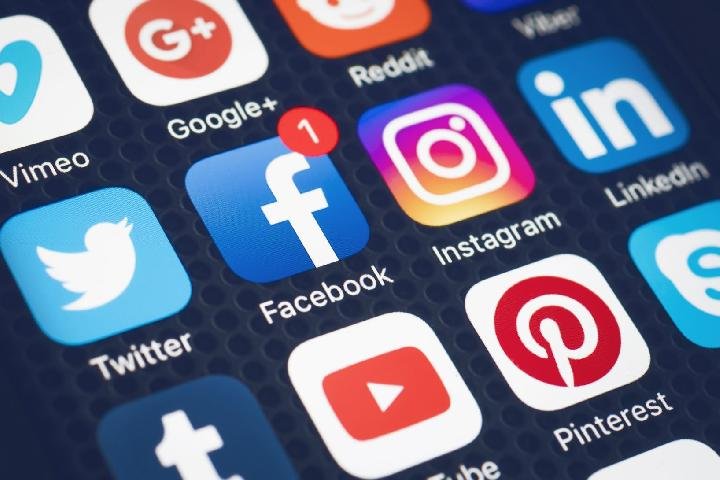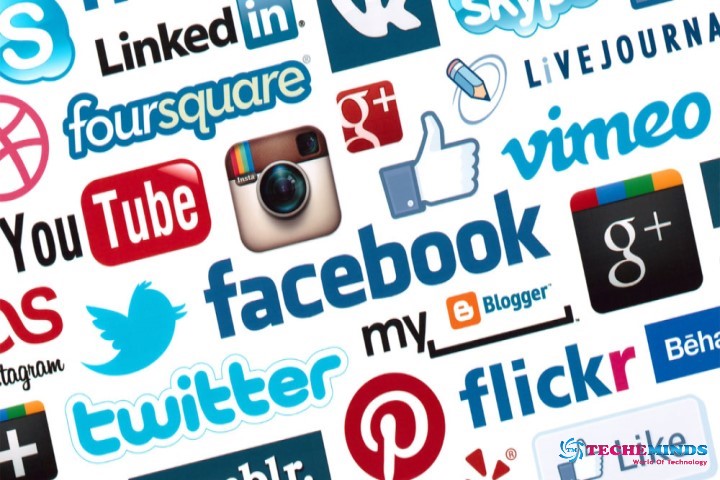The Rise Of Social Media And Social Networks

Table of Contents
What are social networks
It is difficult to find a consensual definition of the term “social networks”, but one of the best (and also most accepted) was formulated by Andreas M. Kaplan and Michael Haenlein. According to them, what is also known as social media is “a group of applications available on the Internet, built and technologically and ideologically based on Web 2.0 that allow the creation and exchange of user-generated content.”
The birth of social networks on the internet dates back to the first half of the 90s. Of course, these “social networks” functioned very differently from how we know them today.
Social networks where did they come from
The beginning of what is known as the “Web 2.0 era” dramatically changed the way we communicate over the Internet. Now information is not only read by the masses, it is also written by the masses.
The birth of social networks dates back to 1994 when GeoCities was founded, the first social network that most closely resembles what we know today. GeoCities had a very dynamic structure and aimed at users creating their own personal internet pages and hosting them in different “neighborhoods”, where they could thus interact with other people who were also registered on the site.
Now, the first social network as such was founded in 1997, known as sixdegrees.com, although it is no longer accessible today.
The birth of social networks as we know them
Starting in 2002, social networks as we know them began to be born. Friendster was born in 2002, a social network for video games today. In 2003 My Space was born and in 2004 Facebook was born, the largest social network in the world. In 2003 LinkedIn was also born, the so-called professional social network.
In 2006 Twitter was born, the 140 characters microblogging social network.
The birth of image-focused social media reached its peak in 2010 when Instagram and Pinterest emerged.
In 2011, Google Plus, Google’s social network, was born.
But let’s start with something that hasn’t changed. How it all started
At the end of 2011 and after investigating the friendship relationships of more than 721 million Facebook users, the University of Milan published a study in which it tried to demonstrate the veracity of this theory. The results of the study showed that amazingly, the “Six Degrees of Separation Theory” actually exaggerates the number of links between users: 99.6% of the analyzed user pairs are connected by 5 degrees and 92% It does it only through 4 degrees, as explained by Facebook on its blog, where they analyzed the results of the analysis.
But let’s go back to the beginnings of this type of service, to the dinosaurs. Although the creation date of Classmates.com, one of the first social networks known as such, is in 1995, the golden age of social networks did not begin until 2003, the launch date of the social network MySpace, and also from the professional networks LinkedIn and Xing. Yes, this was more than 10 years ago.
The Middle Ages of social media
The evident decline of MySpace, one of the pioneering social networks in the market, was noticed only two years later, in 2008. At that time, Facebook managed to overtake the musical social network in the number of unique monthly visitors. Mark Zuckerberg’s monstrous creation continued unstoppable through the last years of the first decade of the 21st century, reaching 600 million users in 2011 and, more recently, surpassing the incredible figure of one billion active users at the end of 2012.

The evolution of mobile terminals in recent years, together with the democratization of prices and access to high mobile browsing speeds were two of the main reasons for the explosion in the use of social networks. This created an instant link between the user and the network, promoting the true essence of some of these social networks, mainly those based on telling stories, experiences or news in a very brief way, such as Twitter (okay, and also Facebook : D).
And then the Social Media Universe went crazy.
Completely crazy
The great expansion of social networks and their fusion with messaging apps As of 2013, the rate of news generation within the social media sector has accelerated in such a way that today it is difficult to summarize everything that happened in a post of an acceptable length.
The closest simile to what happened between 2013 and 2015 is that of a gigantic mixer in which the different platforms rotated, collided and mixed with each other, in such a surprising and chaotic way that the users themselves were surprised almost every week before the latest news.
In a short time, Facebook became Twitter, Twitter became Facebook, Facebook (again) became interested and all (all, all) began to look more and more like the new queens of the sector: messaging apps, such as WhatsApp, Line, WeChat or Telegram. In fact, Facebook ended up acquiring WhatsApp in February 2014 for a price, say … “premium” of $ 19.2 billion, kicking off the golden age of messaging apps.
Are messaging apps social networks?
Currently, it is quite accepted that messaging apps such as WhatsApp or Line are part of the SocialMedia Universe. In fact, if you review the studies that we periodically publish together with IAB and that analyze this sector in detail in our country, you will see how they are included along with the rest of the social platforms.
The motives? More and more users use groups in these apps as they would use Facebook: with a group of contacts, with whom they can share text, video, audio, and image content, and interact in a “social” way. Obviously, the format is something different from the classic social networks but the spirit … is very similar.
The present of Social Networks
During these years all the networks have gone through the same process: their birth, growth, disappearance, and/or maturation/reinvention. But .. what will happen in the future with them? We do not know.
Although 2018 was its worst year due to controversies, scandals, and gaffes, this caused thousands of people to remove its mobile app, Mark Zuckerberg’s network is still the queen with more than 2,200 million active users per month. This network, which also has Instagram and WhatsApp on its part, is the most used by users but also by brands that invest thousands of dollars and euros a year in advertising, to appear on the users’ timeline. But beware, users who are over twenty-somethings, since the youngest (generation Z) do not take this network into account in their day-to-day.
Twitter for years we have been saying that this social network is in the doldrums and we are not wrong, but only half. Although its growth is slow and we all expected its disappearance due to the falls of users (and trolls) that it has suffered, the network that was born as microblogging continues to resist and is the platform of immediacy and trends. This last year the figures with which it closed were significant since the 340 million users were not exceeded.
The only thing we can say is what we have today
Google +
Chronicle of an announced death. The network that we have never used as a network, disappears in the middle of this year, or at least that has been announced from Google after several security breaches. Bye-bye no-social-network.
YouTube
Youtube currently the social network (along with Instagram) is the one that generates the most engagement and the one with the most growth potential among the youngest.
Millennials and Centennials are the users who watch the most minutes of video and this number will continue to grow …
million dollars, it is the preferred platform for more than 500 million users in the world when looking for, finding, or offering work. But it is also the network to expand our client portfolio or create our own personal brand.
Snapchat
The social network that surpassed Instagram for a few years, with more penetration among young people, plummeted during 2018 … Although it still has more than 180 million active users, the design change at the beginning of 2018 and the arrival of Stories On Instagram, they have made me not have new followers like the latter.
What to say about the social network that grows the most in number of users, number of hours we spend per day, and investment in ads. Instagram exceeds 800 million active users per month.
During 2018 this social network underwent a series of changes and updates that have made it the queen of social media: Stories, IGTV, Instagram shopping … We don’t know what 2019 will bring but we are sure that 2018 has been its best year.
Also Read : The Impact Of Social Media Advertising: 12 Reasons Your Business Should Utilize It
